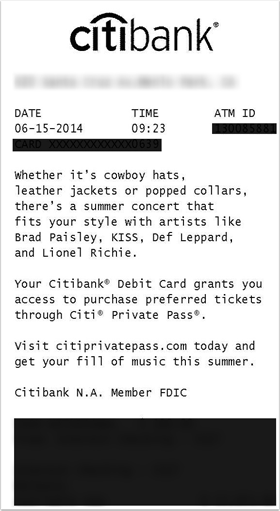Transactional advertising
- laura
- June 17, 2014
- Best practices
 One of the things our bank does that I really like is send ATM receipts directly to the email address associated with the ATM card. No more random pieces of paper I have to track down, it’s all there in my mailbox. This week I noticed that the bank is leveraging the transactional mail to tell me about new services they provide.
One of the things our bank does that I really like is send ATM receipts directly to the email address associated with the ATM card. No more random pieces of paper I have to track down, it’s all there in my mailbox. This week I noticed that the bank is leveraging the transactional mail to tell me about new services they provide.
I think this is awesome. I get my receipt and I get to learn about bank services I didn’t know about previously.
I don’t remember if the bank made me confirm my address when I signed up for online banking, it was a long time ago. But if they did, then they have a dedicated, confirmed advertising channel right to my mailbox. Good for them, convenient for me.
A win-win.